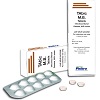
Gumboro Disease
Infectious bursal disease, or Gumboro disease (IBD), is seen in young domestic chickens worldwide and is caused by infectious bursal disease virus (IBDV).
The target organ for the virus is the Bursa of Fabricius where the virus replicates in the B lymphocytes, thereby destroying them. The degree of destruction can vary depending on the virulence of the virus strain.
Post infection the bursa can become enlarged, with a yellowish colored transudate on the surface. Hemorrhages on the serosal and mucosal surfaces are sometimes observed. Atrophy of the bursa, which includes the loss of B-lymphocytes, occurs approximately 7-10 days after infection. Immunosuppression is directly related to this loss of B-lymphocytes, but immunosuppression and related secondary infections are typically seen in birds that recover from the disease. Severity of the immunosuppression depends on the virulence of the infecting virus and age of the host.
The virus is shed in the faeces and transferred from house to house by fomites. It is very stable and difficult to eradicate from premises.
Signs can include depression, watery diarrhoea, ruffled feathers, and dehydration. Morbidity is high and mortality is usually low, but some very virulent strains are capable of causing 60% or higher mortality. Macroscopic and microscopic lesions in the cloacal bursa and molecular identification of the viral genome are used to diagnosis the disease.
High level of protective antibodies play a major role in preventing infections. Maternal antibodies are vital for providing protection in the first 2 to 3 weeks of a young bird’s life. It is important, therefore, to use a combination of both live and killed vaccines in breeder flocks to ensure uniform, high levels of maternal antibodies. Broiler vaccination programs need to be designed based on the level of field challenge in the area, the level of maternal antibodies in the day-old chick and, importantly, the use of the correct vaccine strain.







